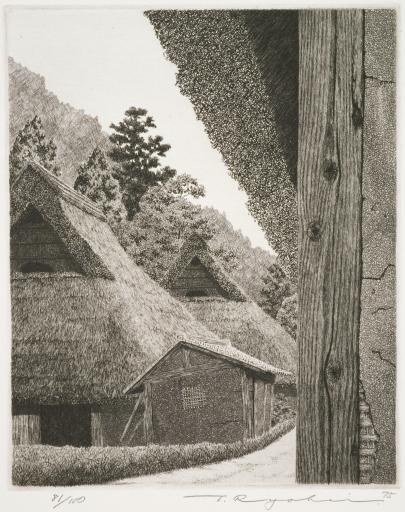Ohara Road, Tanaka Ryōhei
Artwork Overview
Tanaka Ryōhei, artist
1933–1999
Ohara Road,
1975, Showa period (1926–1989)
Where object was made: Japan
Material/technique: etching; aquatint
Dimensions:
Image Dimensions Height/Width (Height x Width): 204 x 165 mm
Sheet/Paper Dimensions (Height x Width): 297 x 235 mm
Image Dimensions Height/Width (Height x Width): 8 1/16 x 6 1/2 in
Sheet/Paper Dimensions (Height x Width): 11 11/16 x 9 1/4 in
Mat Dimensions (Height x Width): 14 x 11 in
Image Dimensions Height/Width (Height x Width): 204 x 165 mm
Sheet/Paper Dimensions (Height x Width): 297 x 235 mm
Image Dimensions Height/Width (Height x Width): 8 1/16 x 6 1/2 in
Sheet/Paper Dimensions (Height x Width): 11 11/16 x 9 1/4 in
Mat Dimensions (Height x Width): 14 x 11 in
Credit line: Gift of Hal M. Davison, Class of 1949
Accession number: 1998.0804
Not on display
If you wish to reproduce this image, please submit an image request
